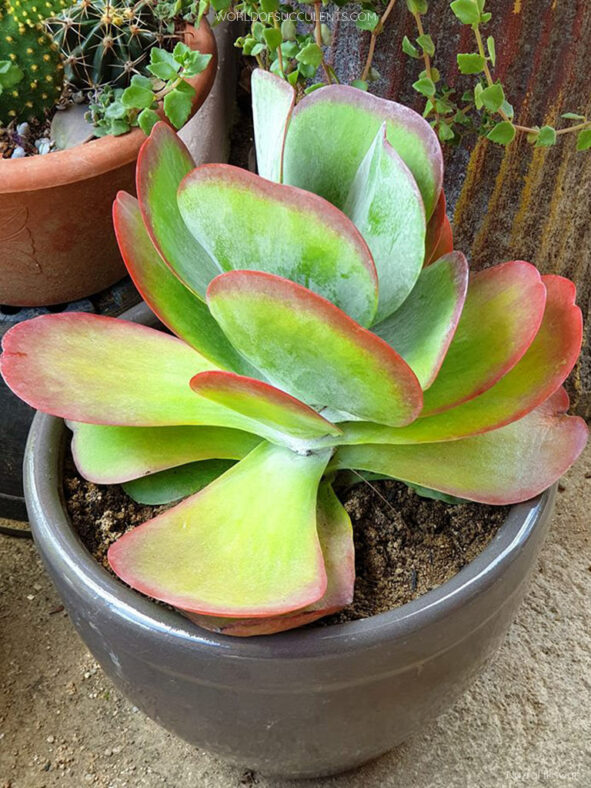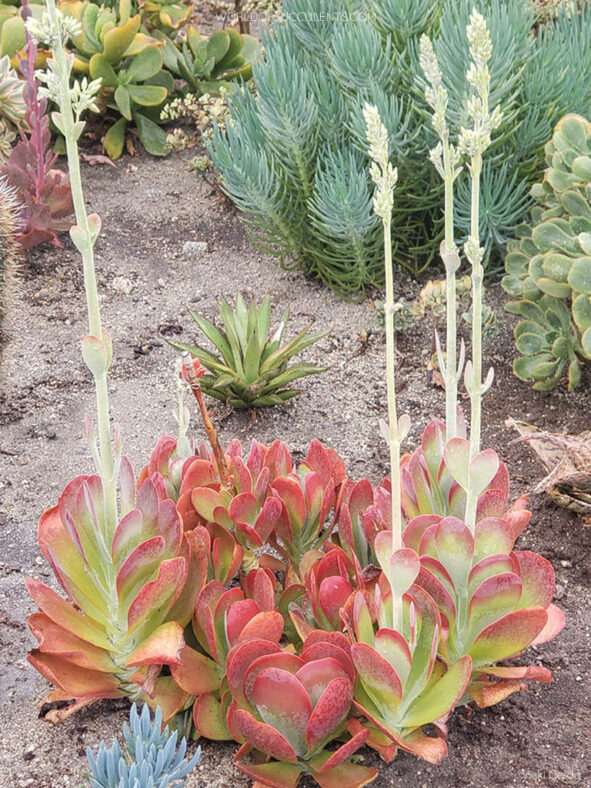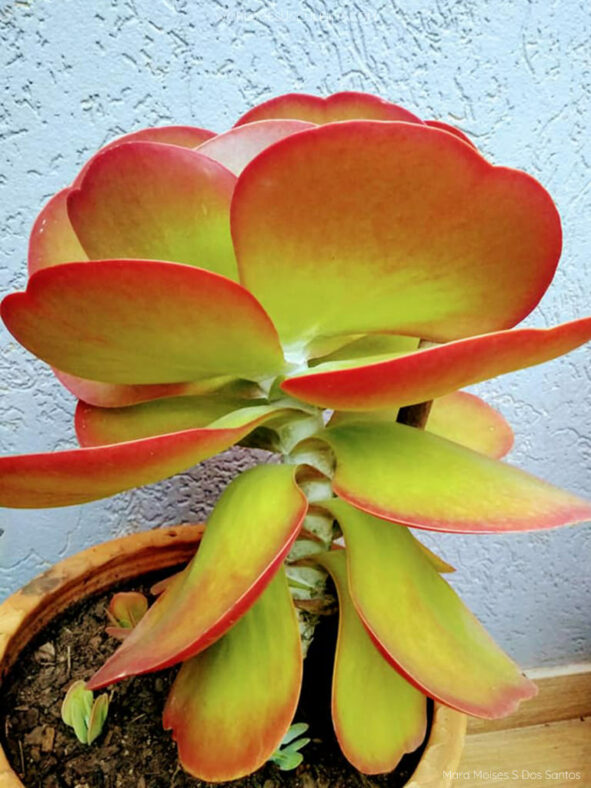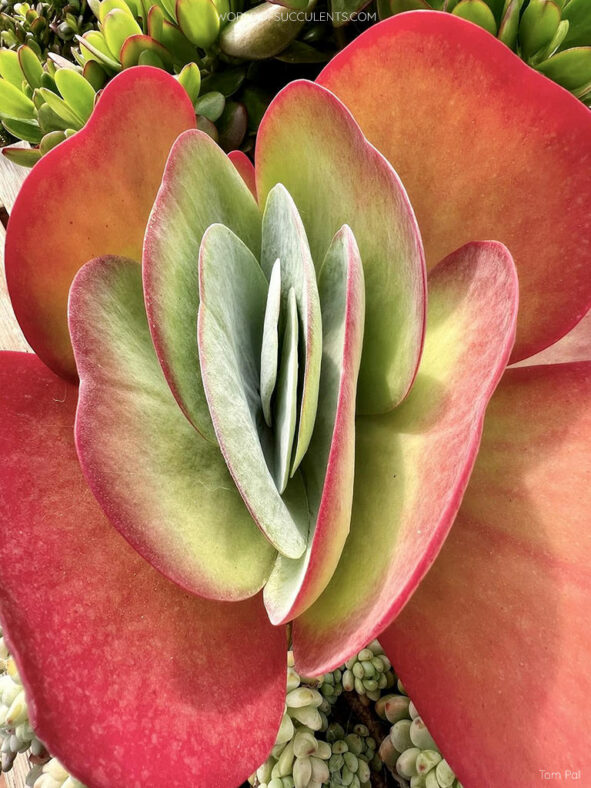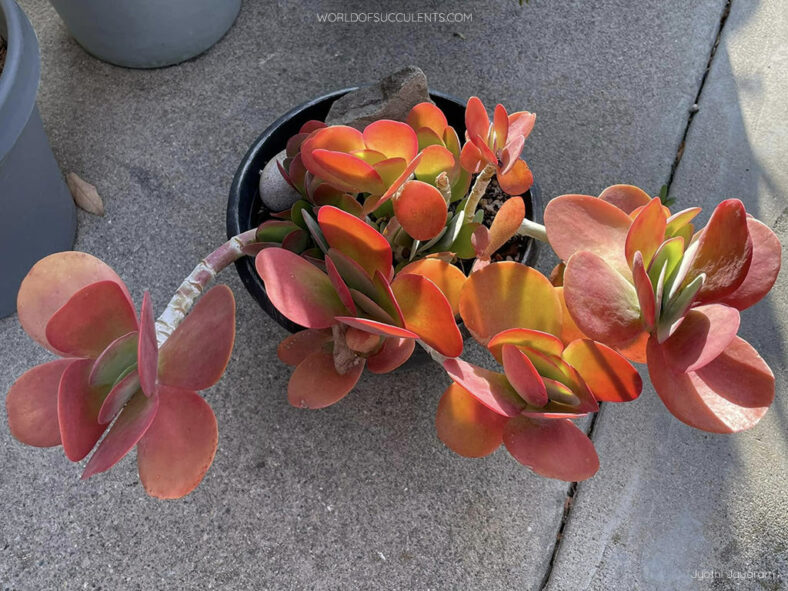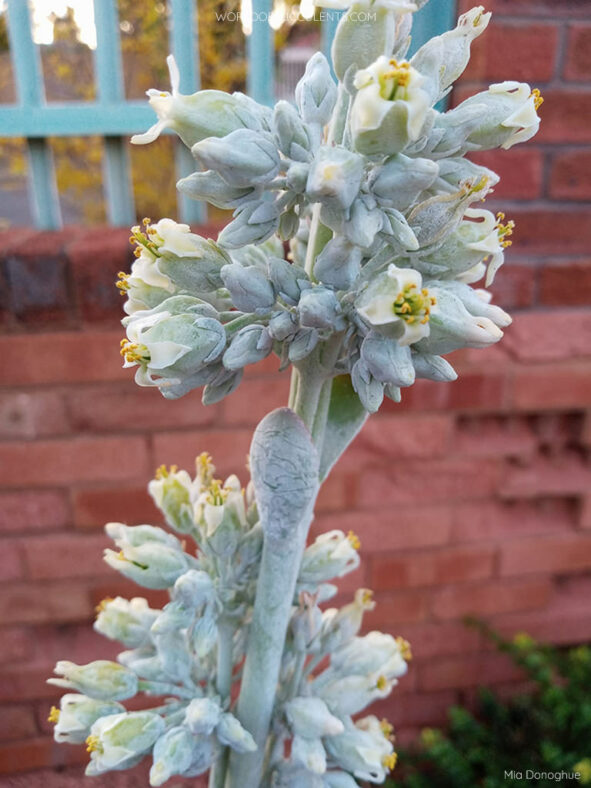Kalanchoe luciae, commonly known as Paddle Plant or Flapjack, is an eye-catching plant that has received the prestigious Award of Garden Merit from the UK's Royal Horticultural Society.
Scientific Name
Kalanchoe luciae Raym.-Hamet
Common Name(s)
Desert Cabbage, Flapjack, Paddle Kalanchoe, Paddle Plant, Red Pancakes
Synonym(s)
Kalanchoe albiflora, Kalanchoe aleuroides
Scientific Classification
Family: Crassulaceae
Subfamily: Sedoideae
Tribe: Kalanchoeae
Genus: Kalanchoe
Etymology
The specific epithet "luciae" (pronounced "LOO-see-ay") honors Mademoiselle Lucy Dufour, an acquaintance of the French botanist and physician Raymond Hamet, who described this species.
Origin
The native range of Kalanchoe luciae extends from north-eastern KwaZulu-Natal to the north-central escarpment of Limpopo and Mpumalanga provinces in South Africa and Eswatini, and northward to Zimbabwe and Mozambique. It grows on hills and ridges, as well as granite slopes in woodlands or savannahs.
Description
Kalanchoe luciae is a biennial succulent shrublet that forms attractive rosettes on one to several branches. The stems and leaves are covered with a white, mealy layer that falls off with age. The fleshy leaves are grey-green to yellowish-green with red-tinged edges. They vary in shape from subcircular or obovate to oblong–spathulate, measuring up to 9.2 inches (23 cm) in length and 6 inches (15 cm) in width. When exposed to direct sunlight and low temperatures, the leaf margins will deepen, and the color will spread.
An erect, slightly rigged flowering stem emerges from the center of rosettes formed the previous year, reaching a height of up to 6.6 feet (2 m). The flowers appear in dense clusters, either in thyrses or panicles, during late winter and early spring. They are urn-shaped, measuring up to 0.5 inches (1.2 cm) in length, and have a pale yellowish-green, distinctly 4-angled corolla, sometimes covered with a slight bloom. This plant is monocarpic, which means the rosette dies after flowering, but it produces new offsets at its base.
Kalanchoe luciae is often mislabeled as its much rarer relative, Kalanchoe thyrsiflora. To distinguish between the two, observe the size of the leaves and the stress response. Kalanchoe luciae has larger leaves that turn redder when stressed, while those of Kalanchoe thyrsiflora remain gray-green. Additionally, the flowers of Kalanchoe luciae are pale yellowish-green with no noticeable scent, whereas those of Kalanchoe thyrsiflora are darker yellow and have a sweet fragrance.
Cultivars of Kalanchoe luciae
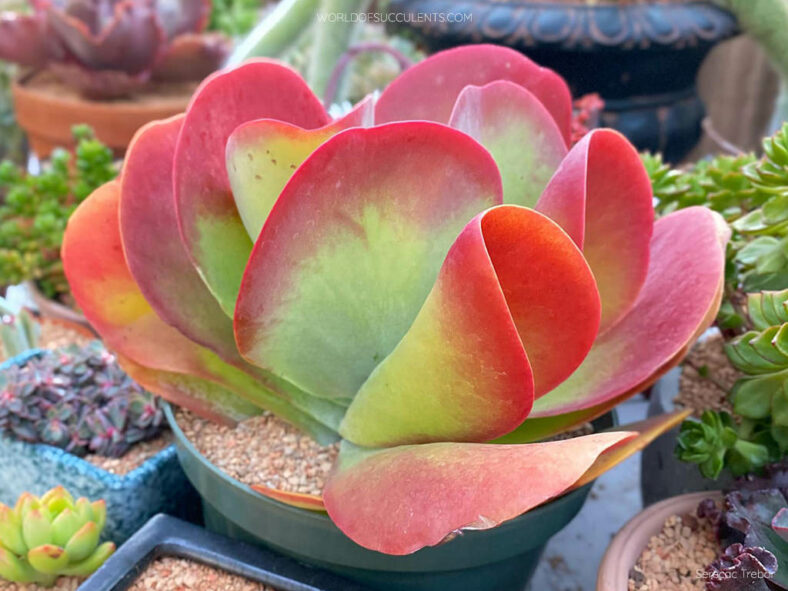
How to Grow and Care for Kalanchoe luciae
Light: Kalanchoe luciae grows best in full sun but usually appreciates some partial shade during the hot summer days. When growing indoors, place it near a window with indirect sunlight. If it does not receive enough light, it may stretch.
Soil: The plant needs soil that drains well and does not like "wet feet." A commercial potting mix for succulents will work well.
Temperature: Kalanchoe luciae thrives in warm, humid conditions but cannot tolerate frost. It grows best in USDA Plant Hardiness Zones 10a to 11b, with average minimum winter temperatures ranging from 30°F to 50°F (-1.1°C to 10°C).
Watering: Water the plant thoroughly from spring to fall, but allow the soil to dry out between waterings, as overwatering can cause stem rot. Reduce watering during winter; only water it enough to prevent the leaves from shriveling.
Fertilizing: Fertilize the plants occasionally during the growing season with a balanced fertilizer diluted to half or quarter strength, and apply it every two weeks.
Repotting: The plant thrives better when frequently repotted. For optimum growth, repot it every two years in spring. Go up one pot size every time you repot.
Propagation: Kalanchoe luciae can be easily propagated by seeds, offsets, or leaf and stem cuttings. Spring is the best time to take cuttings and separate offsets. Sow the seeds in spring or summer.
Learn more at How to Grow and Care for Kalanchoe.
Toxicity of Kalanchoe luciae
Kalanchoe luciae is not toxic to people but should be kept away from pets because, if consumed, it may cause vomiting, diarrhea, and heart arrhythmias.
Links
- Back to genus Kalanchoe
- Succupedia: Browse succulents by Scientific Name, Common Name, Genus, Family, USDA Hardiness Zone, Origin, or cacti by Genus
Photo Gallery
Click on a photo to see a larger version.
